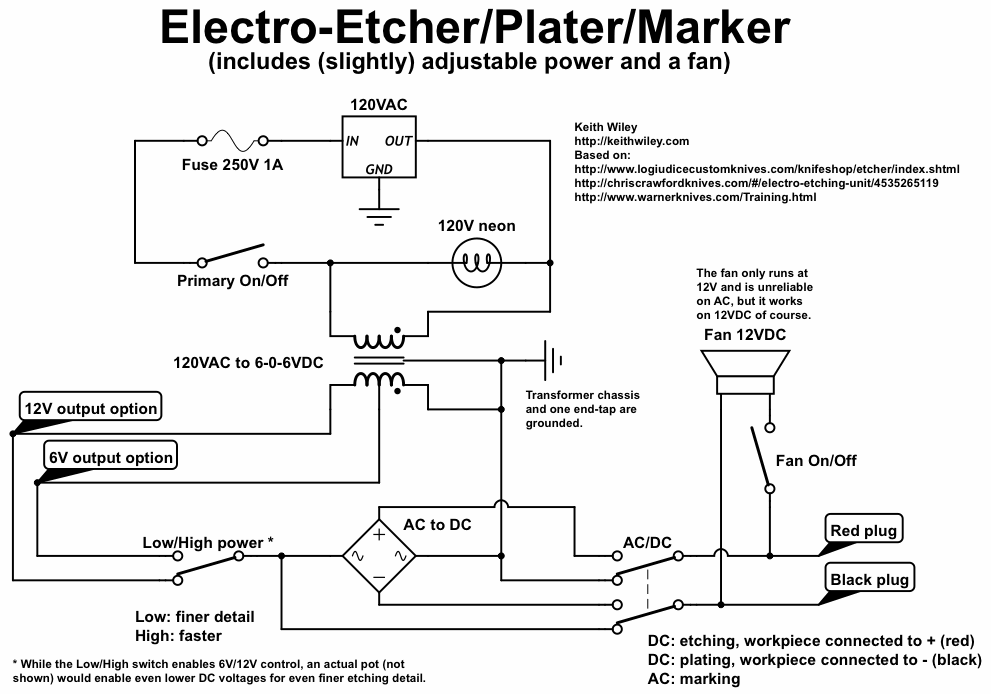Hello all!
So I wanted to get an etching machine and seeing how the nice ones are expensive and the conversion rate is insane, figured I'd do like everything else I have so far in this "hobby" and build one because there's so many tutorials online now. I wanted to make an adjustable one because, why not just do the complicated options right off the bat... I've got pieces for two different ones since most of the stuff came in copies and I had some things lying around so I figured I would build one right now to be used soon ans tinker around another one with a POT and such if it's needed later and seems more complicated a bit.
I wanted something that looked clean and professional and that stored away easily so I used one of my Systainer Minis to build the unit inside, like they do with jobsite compressors (since I use a lot of them for tools). Once the insides are down I'll put a lid on the top and use the leftover space as storage for the wires and stamp. I made a cutout bottom out of leftover steel piece from the oven and glued some Baltic birch under to raise it a bit so the screws wouldn't piece through the bottom. Used some recessed Banana sockets for speakers in the face for a different little touch. Otherwise could have normal sockets near the switches so they don't stick out the main body.
I made a cutout bottom out of leftover steel piece from the oven and glued some Baltic birch under to raise it a bit so the screws wouldn't piece through the bottom. Used some recessed Banana sockets for speakers in the face for a different little touch. Otherwise could have normal sockets near the switches so they don't stick out the main body.


I'm nearing the end of the build, just gotta make the power plug cutout and connect it but I was still not 100% sure about the wiring because a few similar diagrams are out there with some slight differences and I had some questions:
- Does it NEED to have an On/Off switch on top of the AD/DC switch and 12/24v switch? I figured there should be a way to wire the 12/24 switch to act as the main power also as it's an On/Off/On and power has to go in it before hitting the rest of the circuit. As it is now power runs in through the fuse and directly in the transformer.
-I figured I wouldn't need a light with these switches? They light up when powered on right?
-If I were to add a DC/DC Buck converter and POT, where in the setup would it be installed? I figure it would replace where the 12/24 witch is (but then it would actually require a separate On/Off switch?)
The plans I'm going off of are mostly these two:

and https://www.logiudicecustomknives.com/knifeshop/etcher/electro-etcher_circuit.pdf (can't seem to attach a picture of it.
So I modified that second one to be the wiring I figured would work. I'd like everyone's input before I blow something up Would this diagram work properly with the withdrawal of the main power switch and its function being put in the extra DPDT for controlling voltage??
Would this diagram work properly with the withdrawal of the main power switch and its function being put in the extra DPDT for controlling voltage??

Thank youuuuuuuuuuuu
So I wanted to get an etching machine and seeing how the nice ones are expensive and the conversion rate is insane, figured I'd do like everything else I have so far in this "hobby" and build one because there's so many tutorials online now. I wanted to make an adjustable one because, why not just do the complicated options right off the bat... I've got pieces for two different ones since most of the stuff came in copies and I had some things lying around so I figured I would build one right now to be used soon ans tinker around another one with a POT and such if it's needed later and seems more complicated a bit.
I wanted something that looked clean and professional and that stored away easily so I used one of my Systainer Minis to build the unit inside, like they do with jobsite compressors (since I use a lot of them for tools). Once the insides are down I'll put a lid on the top and use the leftover space as storage for the wires and stamp.


I'm nearing the end of the build, just gotta make the power plug cutout and connect it but I was still not 100% sure about the wiring because a few similar diagrams are out there with some slight differences and I had some questions:
- Does it NEED to have an On/Off switch on top of the AD/DC switch and 12/24v switch? I figured there should be a way to wire the 12/24 switch to act as the main power also as it's an On/Off/On and power has to go in it before hitting the rest of the circuit. As it is now power runs in through the fuse and directly in the transformer.
-I figured I wouldn't need a light with these switches? They light up when powered on right?
-If I were to add a DC/DC Buck converter and POT, where in the setup would it be installed? I figure it would replace where the 12/24 witch is (but then it would actually require a separate On/Off switch?)
The plans I'm going off of are mostly these two:

and https://www.logiudicecustomknives.com/knifeshop/etcher/electro-etcher_circuit.pdf (can't seem to attach a picture of it.
So I modified that second one to be the wiring I figured would work. I'd like everyone's input before I blow something up

Thank youuuuuuuuuuuu






